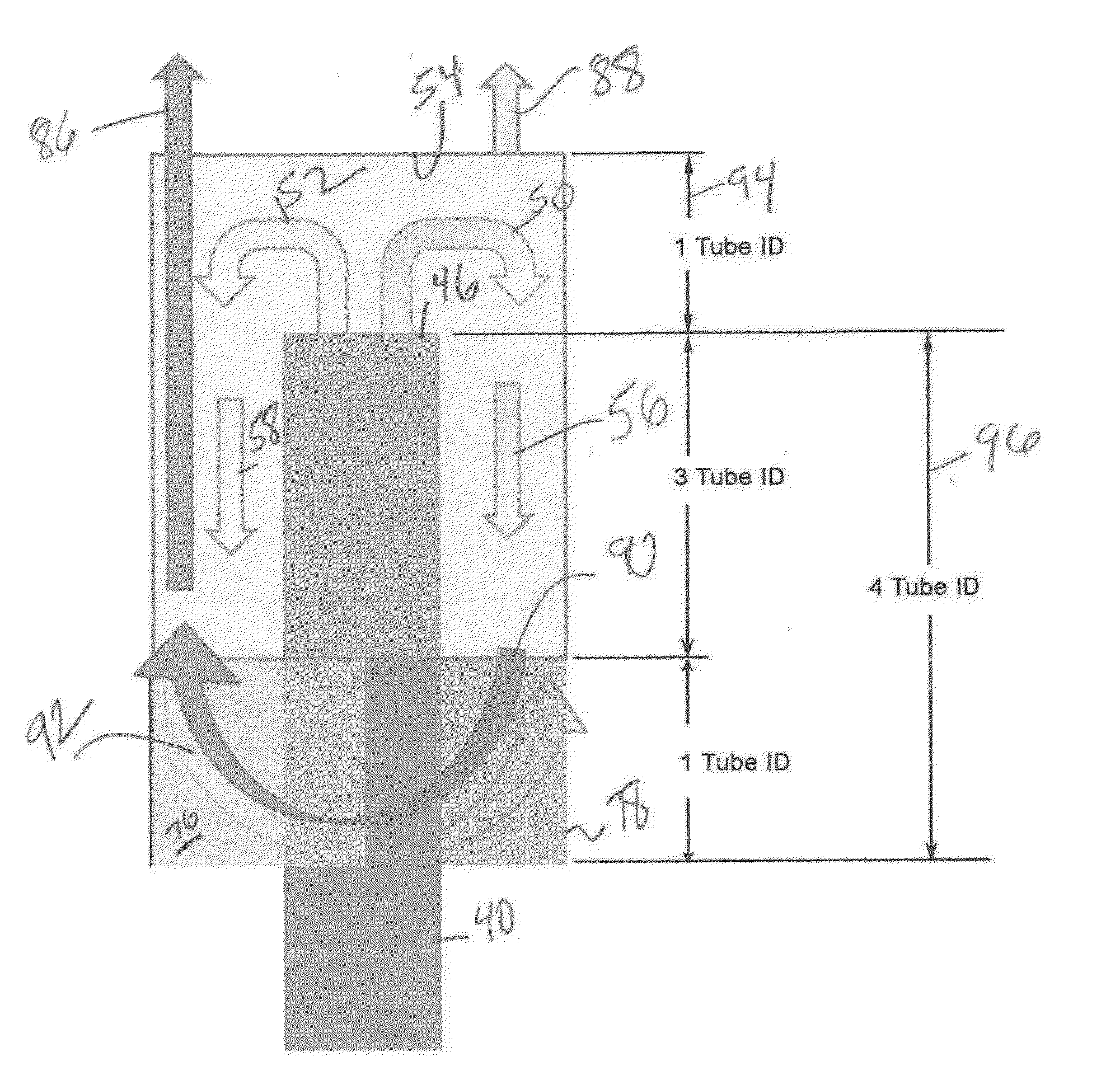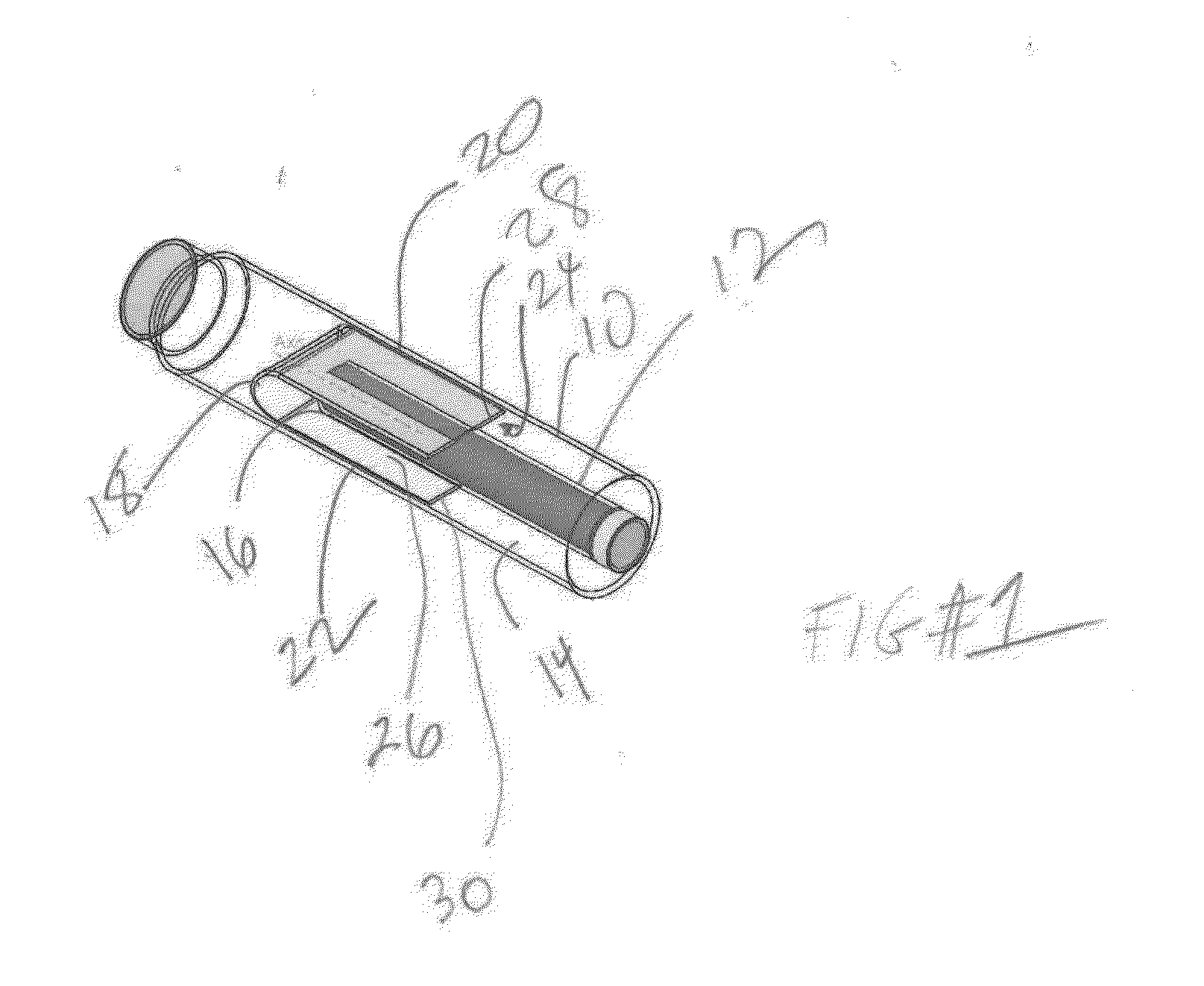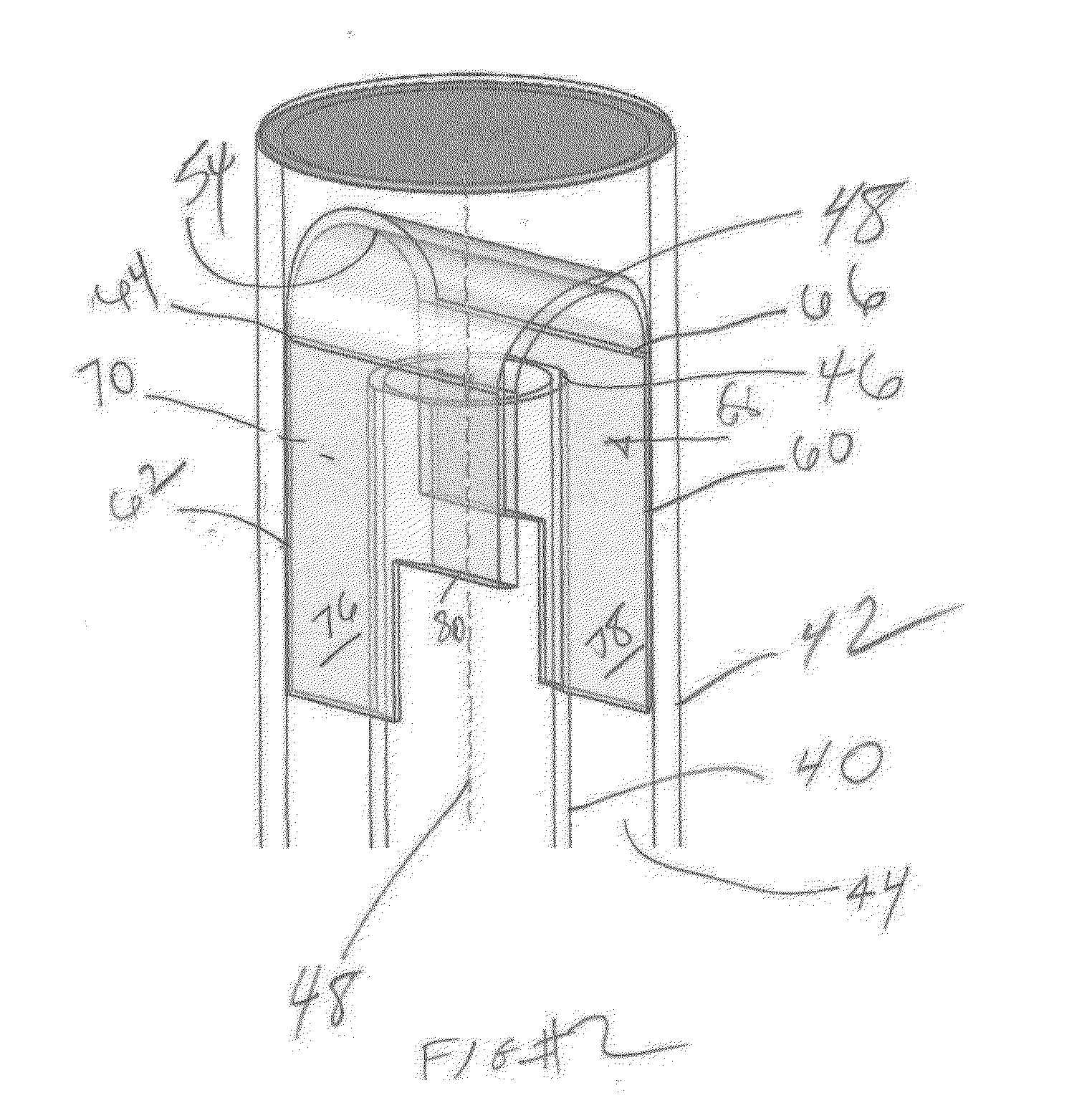Subterranean Solids Separator
a separator and subterranean technology, applied in fluid removal, earthwork drilling and mining, borehole/well accessories, etc., can solve the problem of limited debris separation capability, and achieve the effect of narrow width, less turbulence, and greater radius turn
- Summary
- Abstract
- Description
- Claims
- Application Information
AI Technical Summary
Benefits of technology
Problems solved by technology
Method used
Image
Examples
Embodiment Construction
[0013]The basic debris removal tool design is illustrated in U.S. Pat. No. 7,472,745 FIG. 1 and the basic operation of the device covered there is incorporated by reference as if fully set forth here. Debris laden flow is induced with an eductor (not shown) into inlet tube 40 that is preferably centrally positioned in housing 42 to define an annular debris collection volume 44 that has a closed bottom (not shown) to retain the debris. The debris laden fluid makes a 180 degree turn after exiting through the open top 46 of tube 40 and impacting member 48 that is preferably a cylinder shape cut along the long axis and transversely mounted to the axis 48 of inlet tube 40. The flow regime for FIG. 2 is schematically illustrated in FIG. 6 showing arrows 50 and 52 as a split of the uphole debris laden flow in tube 40 as the top 46 is reached and there is impact with the curved surface 54 of member 48. Arrows 56 and 58 represent the tow discrete downhole directed flow paths defined by paral...
PUM
 Login to View More
Login to View More Abstract
Description
Claims
Application Information
 Login to View More
Login to View More - R&D
- Intellectual Property
- Life Sciences
- Materials
- Tech Scout
- Unparalleled Data Quality
- Higher Quality Content
- 60% Fewer Hallucinations
Browse by: Latest US Patents, China's latest patents, Technical Efficacy Thesaurus, Application Domain, Technology Topic, Popular Technical Reports.
© 2025 PatSnap. All rights reserved.Legal|Privacy policy|Modern Slavery Act Transparency Statement|Sitemap|About US| Contact US: help@patsnap.com



